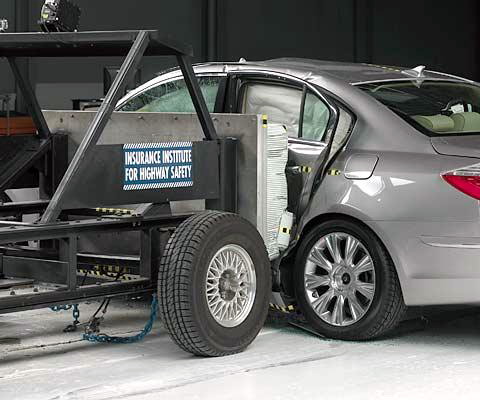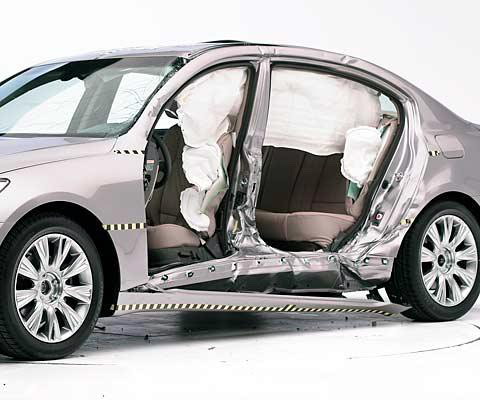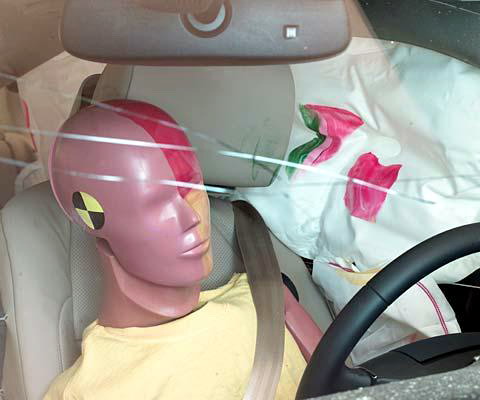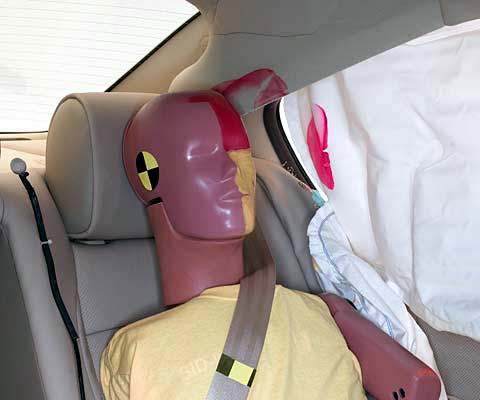Результаты краш-теста Hyundai Genesis
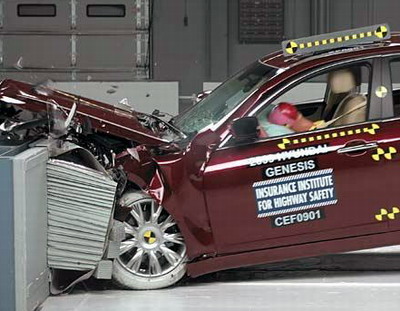
|
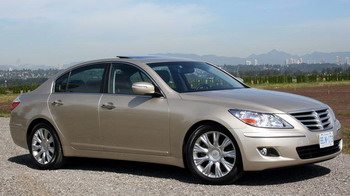
|
||||||||||||||||||||||||||||||||||||||||||||||||||||
|
Модельный год: 2009 Дата проведения теста: февраль 2009 Организация, проводившая тест: IIHS (США)
Общий рейтинг:
Легенда: (уровень защиты) |
Hyundai Genesis (2009)
Вес: 3845 lbs
Комплектация: |
||||||||||||||||||||||||||||||||||||||||||||||||||||
|
ЛОБОВОЙ УДАР СО СМЕЩЕНИЕМ
(г.в. после ноября 2008)
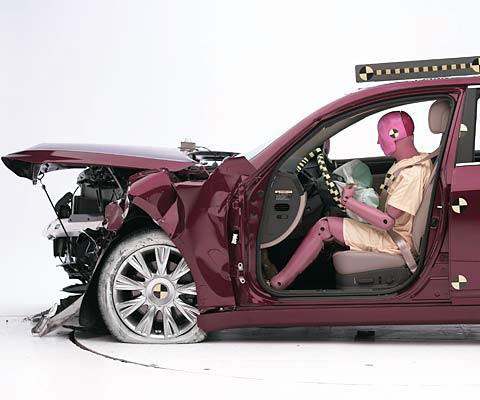 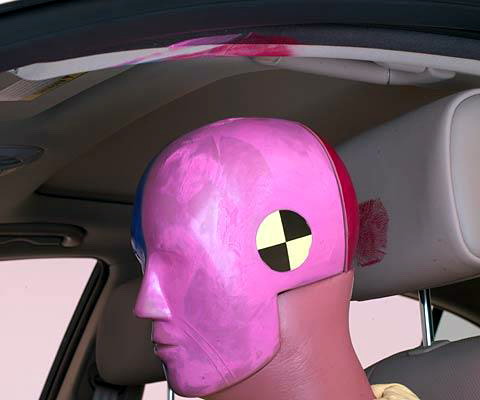 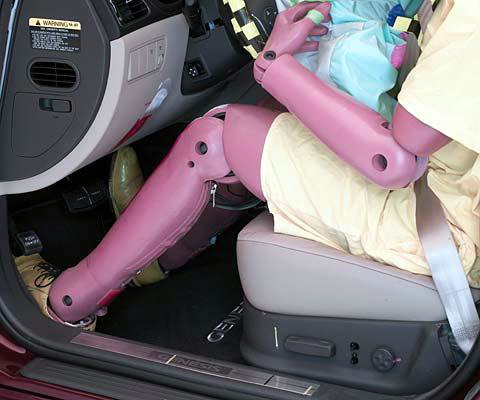
ЛОБОВОЙ УДАР СО СМЕЩЕНИЕМ
(г.в. до декабря 2008)
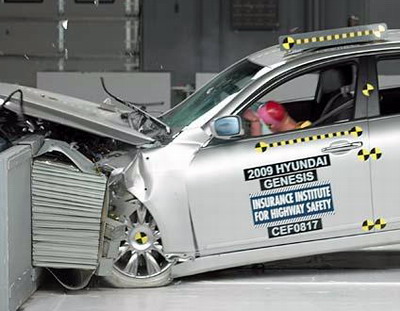 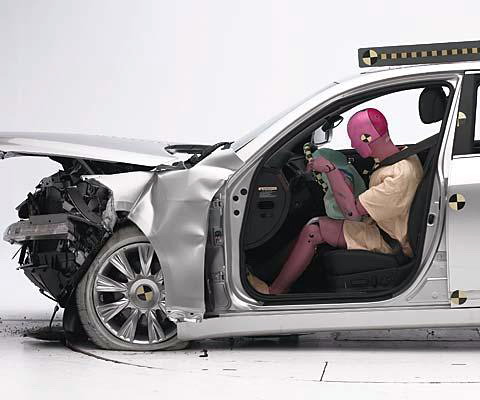 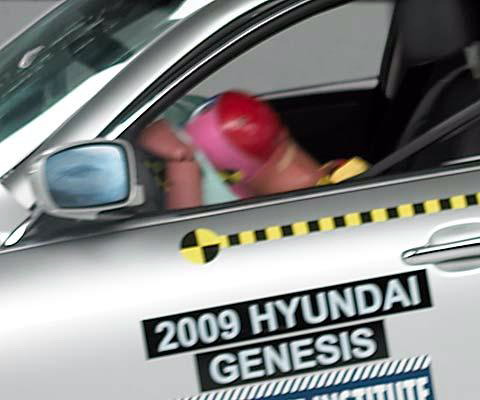 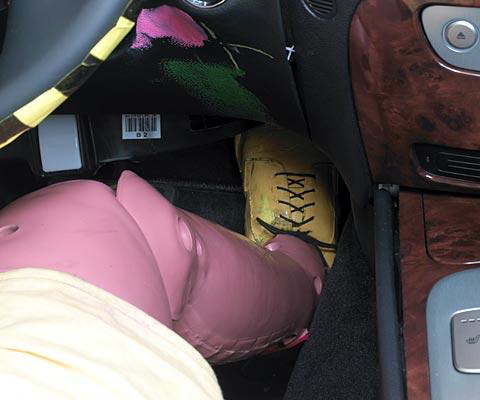
БОКОВОЙ УДАР
|
ЛОБОВОЙ УДАР СО СМЕЩЕНИЕМ
The Hyundai Genesis was introduced in the 2009 model year. Restraints/dummy kinematics Dummy movement was reasonably well controlled. During rebound, the dummy's head moved partway out the open side window and hit the roof rail and B-pillar. Injury measures
Measures taken from the neck and chest indicate low risk of injuries to these body regions in a crash of this severity. A high head acceleration occurred when the dummy's head hit the
steering wheel through the airbag, indicating that head injuries would be possible. Forces on the right tibia, knee, and foot indicate that injuries would be likely to the lower leg and
possible to the knee and foot. Head accelerations from the roof rail and B-pillar hits were low. Restraints/dummy kinematics Dummy movement was well controlled. During rebound, the dummy's head hit the roof rail. Injury measures
Measures taken from the dummy indicate a low risk of any significant injuries in a crash of this severity.
БОКОВОЙ УДАР
The Hyundai Genesis was introduced in the 2009 model year. Two tests of the Genesis were conducted. In the first test, the side curtain and side torso airbags deployed late, contributing
to high forces recorded on the driver dummy's torso. These measures indicated that rib fractures and/or internal organ injuries would be likely. Injury measures
Driver — In the second test, measures taken from the dummy indicate that rib fractures would be possible in a crash of this severity. The risk of significant injuries to
other body regions is low. Head protection
Driver — In the second test, the dummy’s head was protected from being hit by any hard structures, including the intruding barrier, by a side curtain airbag that deployed
from the roof and a side airbag that deployed from the seat. |
||||||||||||||||||||||||||||||||||||||||||||||||||||
 (г.в. после ноября 2008)
(г.в. после ноября 2008) (г.в. до декабря 2008)
(г.в. до декабря 2008)
 =Слабый
=Слабый
